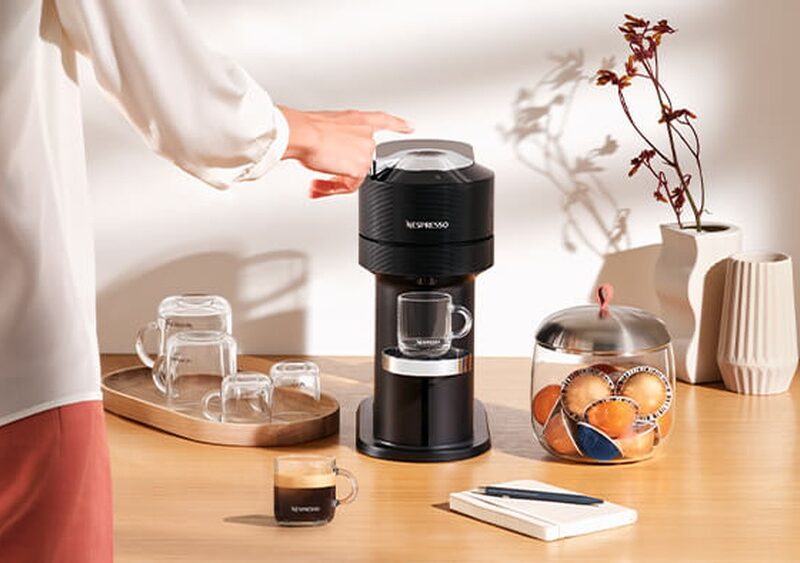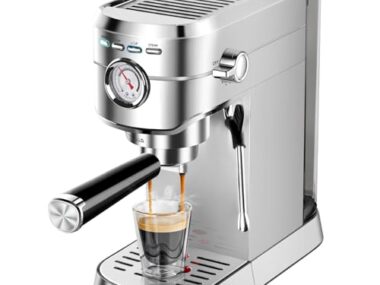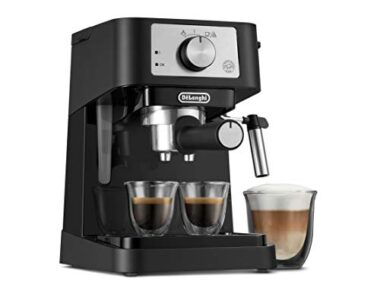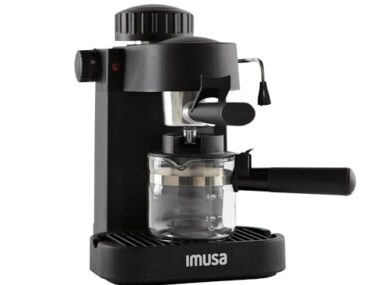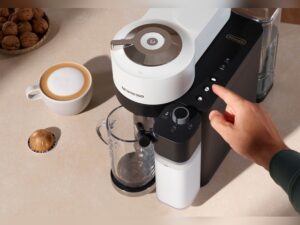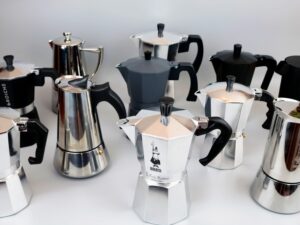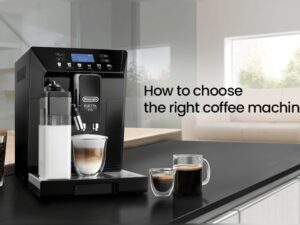Are you torn between getting an espresso machine or a Nespresso? You want great coffee at home, but the options can feel overwhelming.
Which one fits your lifestyle, your budget, and your taste buds best? Choosing the right machine can change your mornings and boost your coffee game. Keep reading, and by the end, you’ll know exactly which choice will give you the perfect cup every time.
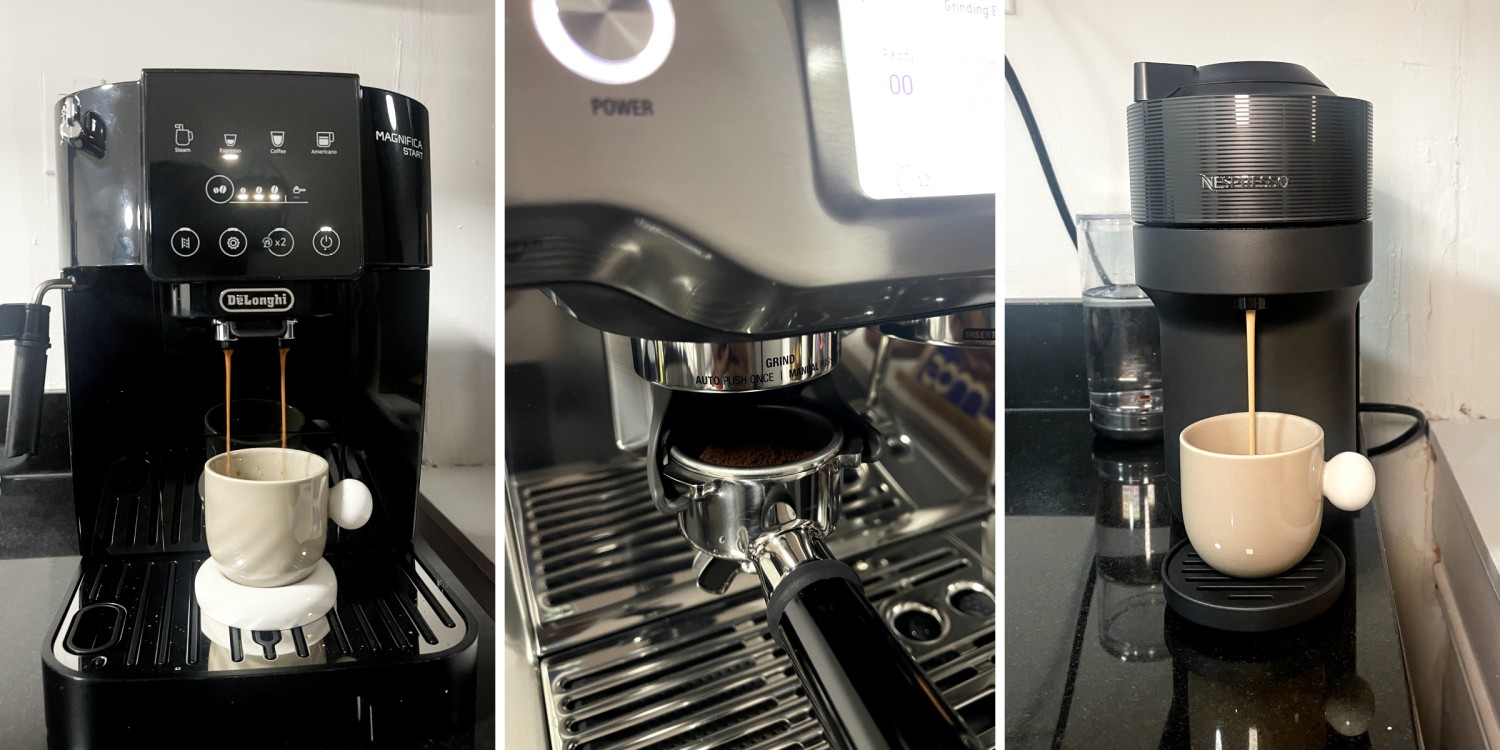
Credit: www.nbcnews.com
Espresso Machine Basics
Understanding the basics of espresso machines helps you choose the right one. These machines brew coffee by forcing hot water through finely ground coffee. The process makes a strong, rich coffee called espresso. This section explains how espresso machines work, their types, and key features to check.
How Espresso Machines Work
Espresso machines use pressure to push hot water through coffee grounds. The water extracts flavors quickly, making a thick coffee shot. Most machines heat water to about 90-96°C (194-205°F). The pressure is usually 9 bars, enough to brew a perfect espresso. The result is a strong coffee with a layer of foam on top called crema.
Types Of Espresso Machines
There are manual, semi-automatic, automatic, and super-automatic machines. Manual machines need you to control the water flow and pressure. Semi-automatic machines control pressure but need you to start and stop brewing. Automatic machines control brewing time too. Super-automatic machines do everything, including grinding coffee beans. Each type suits different needs and skill levels.
Key Features To Consider
Look at pressure, temperature control, and ease of use. A stable pressure ensures consistent espresso quality. Temperature control affects flavor extraction. Some machines have built-in grinders for fresh coffee. Size and design matter, especially for small kitchens. Cleaning and maintenance should be simple to save time. These features help you find a machine that fits your lifestyle.
Nespresso Machines Explained
Nespresso machines offer a simple way to make espresso at home. They use coffee pods that are easy to insert and remove. This design makes the process fast and clean.
Many people choose Nespresso for its convenience and consistent taste. The machines are compact and fit well in small kitchens or offices. Understanding how these machines work helps in deciding if they suit your coffee needs.
Pod System Convenience
Nespresso machines use coffee pods sealed for freshness. Each pod contains the exact amount of coffee needed. You just insert a pod, press a button, and your coffee is ready in seconds.
This system reduces mess and the need to measure coffee. Cleaning is easier because there are no loose grounds to handle. It saves time and effort every day.
Machine Varieties
Nespresso offers several machine models. Some focus on espresso shots, while others make lungo or milk-based drinks. There are basic and premium versions to fit different budgets.
Many machines have built-in milk frothers or attachable accessories. This adds variety to your coffee options. You can choose a machine that matches your taste and lifestyle.
Cost And Maintenance
Nespresso machines vary in price, usually starting at a moderate level. Coffee pods cost more than ground coffee but offer convenience. Machines require regular descaling to keep performance high.
Maintenance is simple and does not take much time. Most parts are easy to clean or replace. Consider the ongoing cost of pods alongside the machine price.
Taste And Quality Comparison
Choosing between an espresso machine and a Nespresso impacts the taste and quality of your coffee. Both machines brew coffee but offer different experiences. Understanding their flavor profiles, consistency, freshness, and customizability helps you decide which suits your taste best.
Flavor Profiles
Espresso machines extract coffee directly from freshly ground beans. This method brings out deep, rich flavors and complex aromas. You get a bold taste with a thick crema on top. Nespresso machines use pre-packaged capsules with ground coffee inside. The flavor is smooth and balanced but less intense. Capsules limit the variety of coffee flavors you can try.
Consistency And Freshness
Espresso machines rely on fresh beans, ground just before brewing. This keeps each shot fresh and flavorful. The taste can vary slightly depending on the grind and tamping. Nespresso machines offer high consistency. Each capsule delivers the same taste every time. Freshness depends on the capsule’s sealing and storage but lacks the freshness of ground beans.
Customizability
Espresso machines allow full control over grind size, coffee amount, and water temperature. You can adjust these to fit your taste perfectly. This means you can experiment and find your ideal cup. Nespresso machines have limited options. You choose from available capsules and cup sizes. Customization is easy but less flexible compared to espresso machines.

Credit: www.nytimes.com
Cost Analysis
Choosing between an espresso machine and a Nespresso involves understanding the costs involved. This section breaks down the expenses to help you decide. Costs include the start-up price, ongoing spending, and long-term value.
Initial Investment
Espresso machines usually cost more at the start. Basic models can be affordable, but high-end machines are expensive. Nespresso machines have a lower upfront price. They are often cheaper and easier to buy. This difference matters if you have a tight budget.
Ongoing Expenses
Espresso machines need coffee beans, filters, and sometimes maintenance parts. Beans bought in bulk can save money. Maintenance costs may add up. Nespresso uses capsules that cost more per cup. Capsules are convenient but less cost-effective. You pay for ease and consistency in every pod.
Value Over Time
Espresso machines can save money if you drink coffee daily. You control the coffee type and amount, which lowers costs. Machines last for many years with care. Nespresso offers quick coffee but with higher regular costs. It suits those who want speed and simplicity over savings.
Ease Of Use
Choosing between an espresso machine and a Nespresso often depends on how easy they are to use. Ease of use affects daily coffee making and overall satisfaction. This section breaks down the setup, cleaning, and learning needed for both options.
Setup And Operation
Espresso machines usually need more setup. You must grind beans, measure coffee, and control water temperature. Nespresso machines come ready to use. Just insert a pod and press a button. Nespresso offers a simpler, quicker start for beginners.
Cleaning And Maintenance
Espresso machines require regular cleaning. You clean the portafilter, steam wand, and water reservoir. This takes time and effort. Nespresso machines need less cleaning. You only empty the used pod container and rinse the water tank. This saves time every day.
Learning Curve
Espresso machines have a steeper learning curve. You must learn how to grind, tamp, and steam milk properly. It takes practice to get it right. Nespresso machines are easy to learn. Press a button, and your coffee is ready. Beginners prefer Nespresso for this reason.
Environmental Impact
Choosing between an espresso machine and a Nespresso affects more than just taste and cost. The environmental impact plays a key role in this decision. Both options create waste and use resources differently. Understanding these differences helps you make a better choice for the planet.
Waste Generation
Espresso machines mainly produce coffee grounds as waste. These grounds are biodegradable and can be composted easily. Nespresso machines use capsules made of aluminum or plastic. These capsules create more solid waste than coffee grounds. Many capsules end up in landfills, increasing pollution.
Sustainability Efforts
Espresso machines rely on traditional brewing with minimal packaging. This reduces the carbon footprint of coffee preparation. Nespresso has started programs to improve sustainability. They work on sourcing coffee responsibly and reducing capsule impact. Still, the production and disposal of capsules add to environmental strain.
Recycling Options
Espresso machine waste can be composted at home or in community gardens. It returns nutrients to the soil, closing the waste loop. Nespresso offers recycling programs for used capsules. Users must collect and send capsules to special centers. This extra step limits convenience but helps reduce landfill waste.
Which One Fits Your Lifestyle
Choosing between an espresso machine and a Nespresso depends on daily habits. Each option suits different needs and lifestyles. Understanding your routine helps pick the best fit for your coffee moments.
Consider how often you drink coffee and how much time you spend making it. This guide breaks down who benefits most from each machine type.
For Casual Drinkers
Casual drinkers enjoy coffee now and then. They want simple use and less cleanup. Nespresso machines offer quick brewing with little effort. Capsules keep things neat and consistent. This option suits those who do not want to learn coffee making skills.
For Coffee Enthusiasts
Enthusiasts love experimenting with coffee flavors and styles. They prefer control over grind size, temperature, and pressure. Espresso machines allow this freedom. These machines require more time and practice but reward with richer taste. Enthusiasts appreciate the craft of making coffee.
For Busy Mornings
Busy mornings need fast and reliable coffee. Nespresso machines deliver coffee in under a minute. No measuring or grinding slows down the process. Capsules ensure every cup tastes the same. Perfect for those who want caffeine quickly before starting the day.

Credit: www.nytimes.com
Frequently Asked Questions
What Are The Main Differences Between Espresso And Nespresso Machines?
Espresso machines require manual brewing with fresh coffee grounds. Nespresso machines use pre-packaged capsules for convenience. Espresso offers customization, while Nespresso focuses on ease and speed. Both deliver quality coffee, but user experience varies significantly.
Is An Espresso Machine Better For Coffee Taste?
Espresso machines generally provide richer, fresher coffee flavor. They allow control over grind size and extraction time. Nespresso offers consistency but less flavor depth. For coffee enthusiasts, espresso machines often deliver superior taste and aroma.
How Much Does A Nespresso Machine Cost Compared To Espresso Machines?
Nespresso machines are usually more affordable upfront, ranging from $100 to $300. Espresso machines can cost $200 to $2000+, depending on features. Nespresso saves time and effort, while espresso machines require investment in skill and maintenance.
Which Machine Is Easier To Clean And Maintain?
Nespresso machines are easier to clean due to capsule use and simple design. Espresso machines need regular cleaning of group heads, portafilters, and steam wands. Maintenance is more time-consuming but essential for optimal espresso machine performance.
Conclusion
Choosing between an espresso machine and a Nespresso depends on your needs. Espresso machines offer control and a rich coffee experience. Nespresso machines provide quick and easy coffee with less effort. Consider your budget, time, and taste preferences carefully. Both have their pros and cons.
Think about what fits your lifestyle best. This choice shapes your daily coffee moments. Enjoy your perfect cup, whichever you pick.
